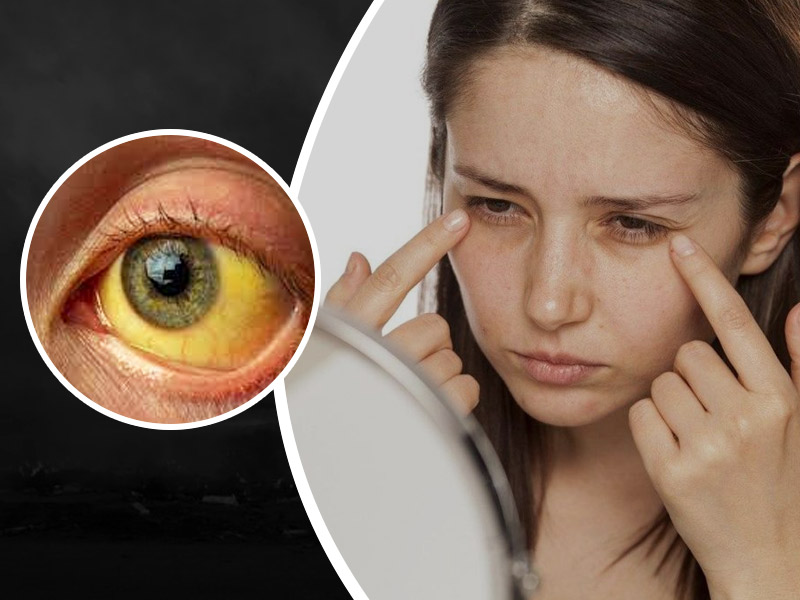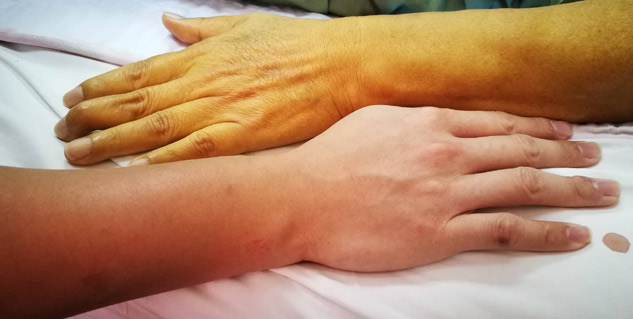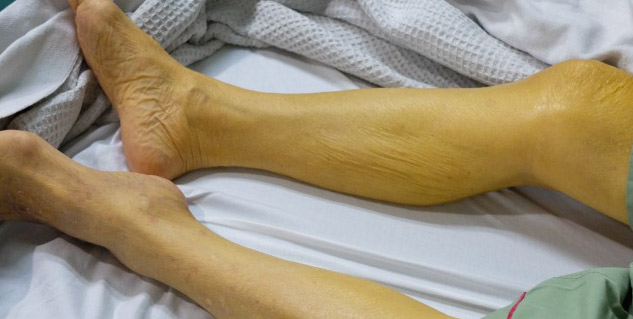
There are certain diseases which affect only one segment of the society and leaves out of others. But there is a popular disease which can happen to anyone of any age group. This diseases is called Jaundice, you must have heard it at least once as it is so common. Jaundice occurs in majority of infants and newborns because of their vulnerability to infections and weak immune system. However this may also be true for adults if they have similar condition because of some underlying cause. Today, we will look at jaundice as a disease and factors that affect this condition.
Jaundice
This term is actually used to describe a condition in which the person gets yellowish skin or eyes. Itself this is not practically a disease but a condition that can cause several diseases. We have Dr. Sumeet Nigam, General Physician from Sahara Hospital, Lucknow to tell us more about this health condition. He explained that jaundice is a condition in which a pigment called bilirubin gets accumulated on the skin or eyes in large quantity due to which the skin appears yellowish. This happens because the pigment is formed due to breaking down of dead blood cells in the liver.

In general cases the liver is able to take out these dead blood cells along with bilirubin but due to lack of immunity or underlying problems, it is unable to do so. This may cause a serious problem in different parts of your body such as liver, gallbladder or pancreas. Red blood cells might also get infected because of this problem.
How is Jaundice Caused?
The major cause of jaundice is because of excess of bilirubin in the body which needs to be removed from the blood. When this waste yellow coloured bilirubin is unable to get out of the body, it gets leaked to surrounding tissues which causes eyes and skin to turn yellowish. When bilirubin reaches the liver, the iron is sucked out from the pigment and other waste chemicals are attached to it. Conjugated bilirubin enters the bile and leaves the body. Since the pigment becomes in excessive quantity, it leaks in tissues near it and results to jaundice.
Symptoms of Jaundice
There are several symptoms that are attached to jaundice, this includes-
- Having a yellowish skin
- Yellowish eyes and pale skin colour
- Pale stools
- Itchiness
- Dark coloured urine
- Fatigue
Symptoms of jaundice due to other underlying factors also contain-
- Weight loss
- Abdominal pain
- Fever
- Pale stools
- Vomiting
Risk Factors Associated with Jaundice
In most of the cases, jaundice takes place because of some underlying health disorder that results to increase in dead blood cells. Due to those conditions, the risk of increasing bilirubin increases and prevents liver from getting it out of the blood stream and your body. Here we will know about some risk factors that may cause Jaundice and result in accumulation of deposition of bilirubin in the tissues.
1. Acute inflammation of liver
If the liver gets inflamed because of any cause or action, it may result in jaundice. This is because the liver will no longer be able to conjugate or secrete bilirubin from the body which will lead to pale yellow skin and eyes.
2. Inflammation of Bile Duct
Another factor that may increase the risk of jaundice is inflammation in the bile duct. Bile duct is responsible for secretion of bile and removes waste from the body. It also prevents the body from having jaundice and maintains body balance.
Also Read- What Are Eye Floaters? 5 Methods By Expert To Treat This Condition
3. Hemolytic anemia
This is a condition in which the production of bilirubin increases. It happens because large quantity of red blood cells break down and in the process bilirubin is produced. Since the liver is unable to take so many dead blood cells out of the body at a time, it may cause jaundice and make you ill.
4. Obstruction of bile duct
This is caused because of some external problem; because of this the bile duct is not able to open to let the bilirubin out. Since bilirubin does not get out of the body it starts to leak through other organs that result in Jaundice.

5. Gilbert’s Syndrome
It is an inherited condition that actually impairs the enzymes that are responsible to secrete bile juice. Since bile juice is not secreted, it causes problems in excretion of bilirubin and harmful enzymes present in the body along with it.
Also Read- Do You Know About Protein Poisoning? Here Are Effects, Causes, Symptoms Of This Condition
6. Cholestasis
This is a lesser known condition which is also responsible to break the flow of bile juices in the liver. As the bile juices are not able to get into the liver, the excretion process of dead blood cells is not able to take place properly. Because of this problem, it causes yellowish skin and eyes leading to Jaundice.
How can Jaundice be treated?
Treatment of jaundice majorly depends on the underlying cause because of which the condition has taken place. Once the underlying condition is diagnosed properly, then it becomes easier to tackle symptoms of jaundice and cure the problem.
Here are some treatments that are given according to the underlying condition that has affected the person.
If jaundice has been caused by Anemia then it can be treated by increasing the amount of iron supply in the body. Iron can be increased in the blood stream by taking more iron supplements. Iron rich diet and products containing iron can be beneficial for the person.
If it is caused because of hepatitis, then it may require anti-viral and steroid medication. This will enable the person to recover from hepatitis and aid in removal of bilirubin from the body.
In obstruction induced jaundice, the doctor would need to know the object or substance that has obstructed the passage. In this form, surgical method is applied to take out or remove the obstruction causing problems and leading to jaundice.
Medications- Sometimes certain medication may lead to jaundice because of it’s by reaction on the body. In this case, you need to change your medication by consulting an expert.
Read More Articles on Other Diseases
Picture Credits- Pixabay.com








